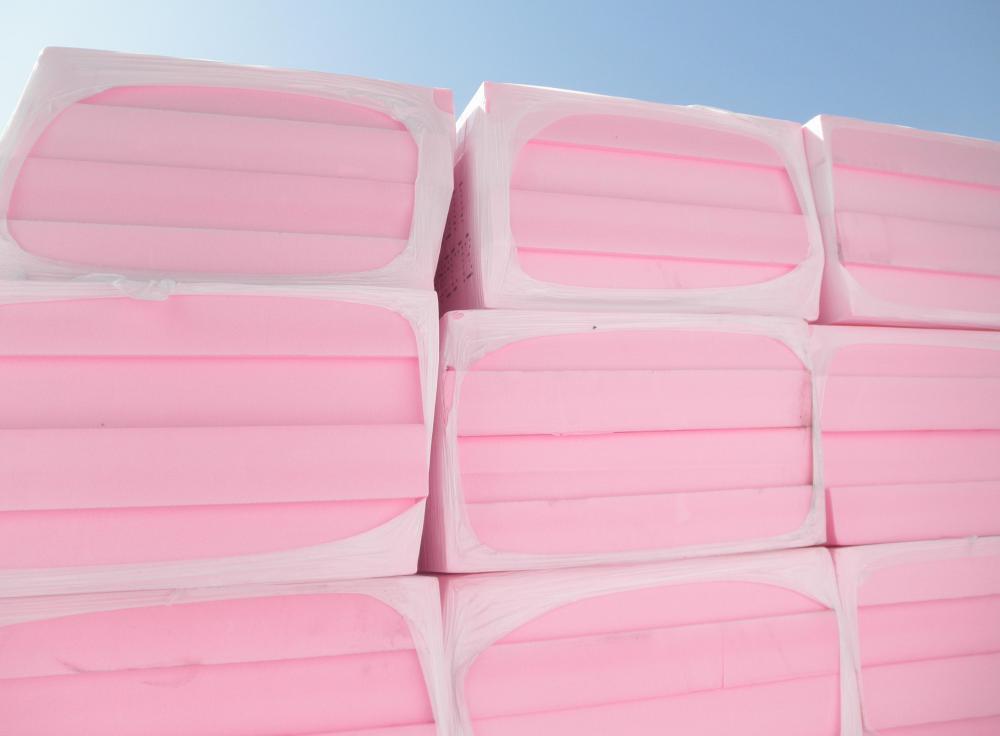At WiseGEEK, we're committed to delivering accurate, trustworthy information. Our expert-authored content is rigorously fact-checked and sourced from credible authorities. Discover how we uphold the highest standards in providing you with reliable knowledge.
What are Some Different Insulation Materials?
Humans have been insulating their living quarters since the beginning of time. It mattered not whether the residence in question was a cave, hut, pioneer cabin, or modern home, the urge for comfort was paramount. We wish to stay warm in the winter and cool in the summer.
Early insulation materials consisted of grass, leaves, straw, mud, or even old clothing and newspapers. Any form of insulation was fine, and homeowners took advantage of whatever might be readily available in order to plug a hole, fill a crack, or prevent a cold breeze from whistling through the bedroom. Functionality was of far greater importance than aesthetics, efficiency, or energy conservation.

In the present, however, we are offered a plethora of insulation materials. Some are well tested and traditional, and some are the products of advanced technology. Surprisingly though, some of the earliest insulation materials are now back in vogue. Often, they provide very good results.
Most insulation is rated with an R-value. This numeric value signifies the thermal resistance of a given insulation material. In other words, the higher the R-value, the more effective the insulating material will be in terms of holding in heat. For example, a structure built solely of concrete will usually have a designation of R-1.

The most common insulation materials currently in use are manufactured from fiberglass. This form of insulation is generally purchased in batts or rolls, and consists of molten glass spun into very fine fibers and bonded together. The insulation value of fiberglass is highly dependent upon its thickness. For instance, four inches (10 cm) of fiberglass insulation might provide a value of R-15. High-density fiberglass insulation, if 12 inches (30 cm) thick, will achieve a rating of nearly R-40.

Another of the more popular insulation materials is polyurethane foam. This foam quickly expands and hardens after it has been sprayed into an empty wall cavity. When the foam has set and cured, it can achieve a factor of nearly R-6.5 per inch (2.5 cm). Other foam insulations are available, some being cement-based, however they are not as efficient as the polyurethane variety.

One of the more interesting and environmentally safe insulation materials is drawn from the beginnings of the twentieth century. There are a growing number of homes which utilize bales of straw as their primary insulation. The bales are stacked on a raised foundation and covered with a wire mesh. In turn, the mesh is covered with plaster, stucco, or concrete. Straw is also being compressed under heat and high pressure to create pre-manufactured insulation panels.
In the age of recycling, cellulose insulation is proving a viable option as well. This type of insulation is in fact comprised of discarded newspapers and cardboard. The paper is treated with various chemicals to make it resistant to flame and insects, and is usually injected into open wall spaces via a wet-spraying technique. Furthermore, denim and other cotton fibers are being recycled and used as insulation materials.
The key word to remember with insulation is “efficiency." Each degree of heat kept inside translates directly into energy conservation, not to mention extra dollars in the bank account.
AS FEATURED ON:
AS FEATURED ON:














Discuss this Article
Post your comments